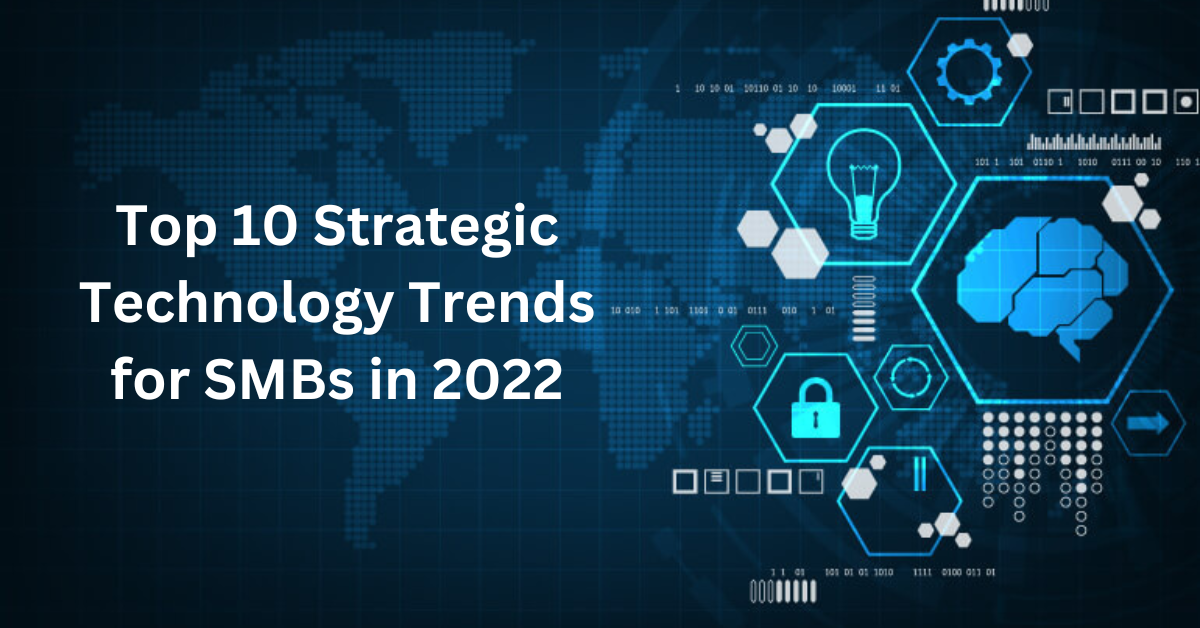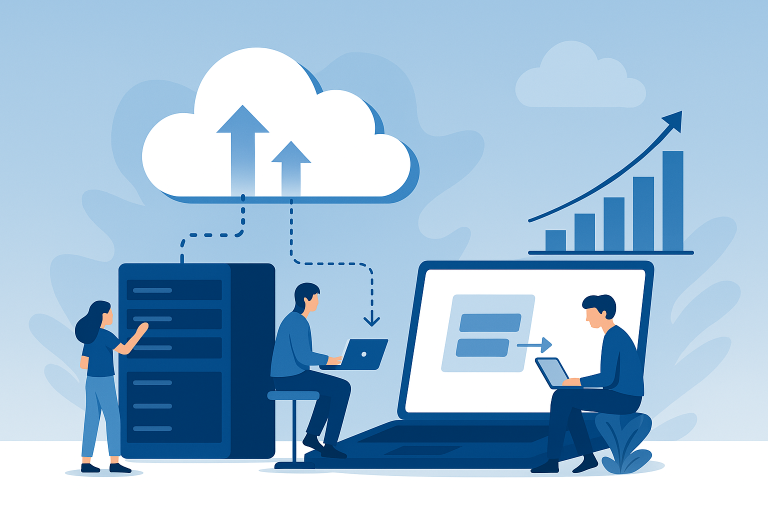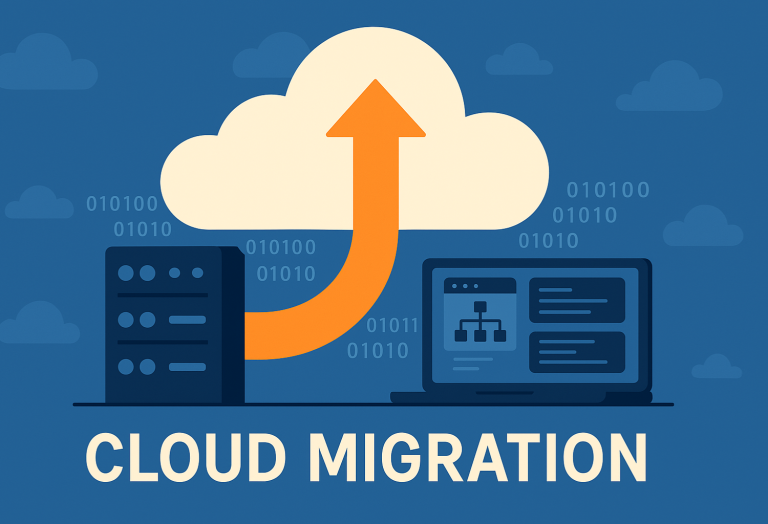
Technology is ever evolving. Moreover, new technologies aim to provide better facilities, making tech jobs easier, quicker, and more efficient. Each year, many new technologies emerge, and some become crucial for businesses. Consequently, these trendy technologies can help CEOs drive digitalization, foster better growth, and enhance revenue generation. Therefore, here are the top ten technology trends in 2022 that most significantly influence small and medium-sized businesses (SMBs).
Trend 1: Data Fabric
Data fabric is robust architecture and set of data management services that provide consistent capabilities across platforms. It enables flexible integration of data across cloud, on-premises, and edge devices, ensuring data availability everywhere.
Data fabric minimizes integration issues, enhances data quality, and simplifies governance and management by reducing tool complexity. It can automatically apply corporate policies to data and also deliver trusted data. Data fabric provides you with a single, comprehensive view of business data and accelerates your digital transformation process by maximizing the value of your data. This architecture can minimize your data management efforts by up to 70%.
Trend 2: Cybersecurity Mesh
Gartner states cybersecurity mesh architecture(CSMA) is “a composable and scalable approach to extending security controls, even to widely distributed assets. Its flexibility is especially suitable for increasingly modular approaches consistent with hybrid multi-cloud architectures.” This architecture enables a more composable, flexible and resilient security ecosystem. A cybersecurity mesh permits tools to interoperate several supportive layers, including consolidated policy management, security intelligence and identity fabric.
CSMA helps to enhance the cybersecurity perimeter around the identity of a person or thing and prevents hackers from exploiting a given network. In short, CSMA is a standardized responsive security approach to improve overall security while moving control points closer to the assets they’re designed to protect. According to Gartner’s prediction, cybersecurity mesh will support more than 50% of digital access control requests by 2025.
Trend 3: Privacy-Enhancing Computation
The highest level of sensitive data protection is a genuine concern of organizations to deal with the evolving privacy and data protection laws and the growing concerns of potential consumers. Privacy-enhancing computation focuses on leveraging a group of technologies that enable you to secure the processing of personal data in both trusted and untrusted environments. Those cutting-edge technologies support you in maintaining privacy and data protection and preventing violations and hacker attacks while meeting compliance requirements. Some privacy-enhancing computation techniques are zero-knowledge proof, multi-party computation, homomorphic encryption, differential privacy, etc.
Trend 4: Cloud-Native Platforms
According to Gartner, “Cloud-native platforms are technologies that allow you to build new application architectures that are resilient, elastic and agile — enabling you to respond to rapid digital change.”
In the case of the traditional lift-and-shift approach to the cloud, users often fail to take advantage of actual cloud benefits and may encounter maintenance complexity. However, in such a situation, cloud-native platforms enable users to enhance applications post lift-and-shift. Consequently, this ‘migrate and modernize’ approach allows organizations to derive maximum value from the cloud without the need to rewrite applications from scratch.
Trend 5: Composable Applications
Composable applications are meant to enable organizations to create applications by reusing codes – they help redevelop and redeploy new applications as per business-specific needs. This
business-centric approach makes it easy for developers to use and reuse code, speeds up the process, reduces the time to market for new software solutions, and minimizes costs. Many consider composable applications the future of software development.
Trend 6: Decision Intelligence
This approach is not only practical but also one of the most advanced methods for improving organizational decision-making. Specifically, it combines data science with theories from social science, decision-making techniques, and managerial science to help users make the right decisions for their organization. Furthermore, this model views each decision as a set of processes and refines them using artificial intelligence and thorough information analysis. Ultimately, decision intelligence provides an infrastructure for implementing best practices in organizational decision-making.
Decision intelligence can help organizations to make the right decision — with the use of artificial intelligence(AI), augmented analytics, and simulations, it can automate decision-making for a better outcome.
Trend 7: Hyperautomation
According to Gartner, hyperautomation is a business-driven approach for quickly identifying and automating various business and IT processes.
This concept aims to streamline operations using AI, robotic process automation (RPA), and other technologies to run the system without human intervention.
Adopting hyperautomation in your organization enables scalability, improves productivity, increases business agility, facilitates remote operations, etc.
Trend 8: AI Engineering
This discipline of engineering primarily focuses on developing tools, systems, and processes using artificial intelligence. Additionally, AI engineering automates data, models, and application updates to streamline AI delivery. Moreover, modern engineering merges systems engineering, computer science, software engineering, and human-centered design to create applications that effectively meet business needs.
Trend 9: Distributed Enterprises
Distributed enterprises employ remote teams across cities, countries, or continents, utilizing both full-time and part-time staff. This new-age, digital-first, remote-first business model has a diverse work culture to improve consumer and employee experiences, and so on.
A distributed enterprise better meets the needs of modern consumers and remote employees who seek virtual services and hybrid workplaces.
Trend 10: Autonomic Systems
Like self-managed physical systems, autonomic software systems are also self-managed. They learn from their environments and dynamically modify their own algorithms in real-time to optimize their behavior as per needs. Self-configuration, self-healing, self-optimization, and self-protection are the most essential and beneficial criteria of autonomic computing.
Autonomic systems use agile technology to understand their components, specifications, capacity, and real-time status. It also knows its own, borrowed, and shared resources. They can run its set-up automatically and reconfigure again and again as needed. It can also self-heal and recover from failures.
Autonomic systems can also protect themselves by detecting and identifying different attacks on them.
Conclusion:
These tech trends can impact different organizations in different ways. You must choose the right technology trend per your business needs and positively influence your business. For successful tech integration, CIOs and IT leaders must understand the organization’s short-term and strategic business objectives. You can also take of managed IT services firm to choose and integrate these most suitable technologies.

